
Marianna is a borough in Washington County, Pennsylvania, United States. The population was 399 at the 2020 census.

Roslyn is a city in Kittitas County, Washington, United States. The population was 950 at the 2020 census. Roslyn is located in the Cascade Mountains, about 80 miles east of Seattle. The town was founded in 1886 as a coal mining company town. During the 20th century, the town gradually transitioned away from coal, and today its economy is primarily based on forestry and tourism. The town was the filming location for The Runner Stumbles, Northern Exposure, and The Man in the High Castle. Many of the town's historical structures have been preserved, and its downtown was added to the National Register of Historic Places in 1978.

The Ludlow Massacre was a mass killing perpetrated by anti-striker militia during the Colorado Coalfield War. Soldiers from the Colorado National Guard and private guards employed by Colorado Fuel and Iron Company (CF&I) attacked a tent colony of roughly 1,200 striking coal miners and their families in Ludlow, Colorado, on April 20, 1914. Approximately 21 people were killed, including miners' wives and children. John D. Rockefeller Jr. was a part-owner of CF&I who had recently appeared before a United States congressional hearing on the strikes, and he was widely blamed for having orchestrated the massacre.
A mining accident is an accident that occurs during the process of mining minerals or metals. Thousands of miners die from mining accidents each year, especially from underground coal mining, although accidents also occur in hard rock mining. Coal mining is considered much more hazardous than hard rock mining due to flat-lying rock strata, generally incompetent rock, the presence of methane gas, and coal dust. Most of the deaths these days occur in developing countries, and rural parts of developed countries where safety measures are not practiced as fully. A mining disaster is an incident where there are five or more fatalities.

Moura is a rural town and locality in the Shire of Banana in Central Queensland, Australia. It services the surrounding coal mining and rural activities. It is situated approximately 65 kilometres (40 mi) west of Biloela on the Dawson Highway, 186 kilometres (116 mi) west of the port city of Gladstone, and 171 kilometres (106 mi) south west of Rockhampton.

Thurber is an unincorporated community in Erath County, Texas, United States, located 75 miles west of Fort Worth. It was, between 1888 and 1921, one of the largest producers of bituminous coal in Texas and the largest company town in the state, with a population of over 10,000. The population of the community is 48 per the 2010 United States Census.

Dawson is a ghost town in Colfax County, New Mexico, United States. Dawson is located approximately 17 miles northeast of Cimarron, and was the site of two separate coal mining disasters in 1913 and 1923. In 1950, the mines were closed, and by 1954 the last residents had left and the post office closed.
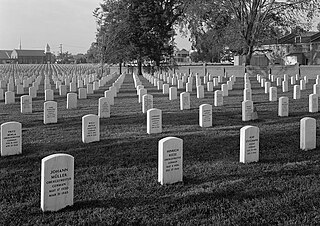
Hampton National Cemetery is a United States National Cemetery in the city of Hampton, Virginia. It encompasses 27.1 acres (11.0 ha), and as of 2014, had over 30,000 interments. There are two separate parts to this facility. The original cemetery is called the "Hampton Section" and is located on Cemetery Road in Hampton, VA. It is on the western side of I-64. The new section which is called the "Phoebus Addition" or the "Phoebus Section" West County Street in Hampton, VA east of I-64. It is less than a mile from the original cemetery. Both sections of the Hampton National Cemetery are closed to new interments.

Mill Springs National Cemetery is a United States National Cemetery located in the town of Nancy, eight miles (13 km) west of the city of Somerset in Pulaski County, Kentucky. Administered by the United States Department of Veterans Affairs, it encompasses 6.3 acres (2.5 ha), and as of 2014, has over 4,000 interments.

The Telluride Historic District encompasses a significant portion of the developed area of the former mining boom town of Telluride, Colorado. Telluride was founded in 1878, and was a major metals mining center until 1913. The historic district covers 80 acres (32 ha) of downtown Telluride and surrounding residential areas, as well as Lone Tree Cemetery, the town's first cemetery. It was declared a National Historic Landmark in 1961 for its well-preserved late boom-town architecture.
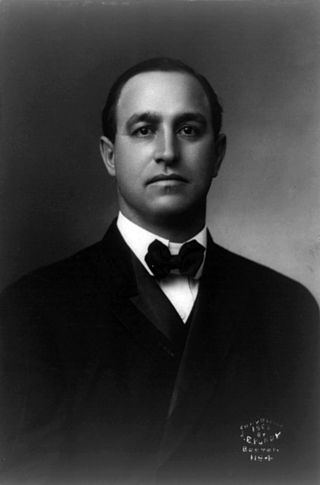
John Mitchell was a United States labor leader and president of the United Mine Workers of America from 1898 to 1908.

Harriet Tubman Grave is an historic gravesite located in Fort Hill Cemetery at Auburn, in Cayuga County, New York. The granite gravestone marks the resting place of famed African-American abolitionist and Christian Harriet Tubman, who was born into slavery in Maryland in the United States in 1822.
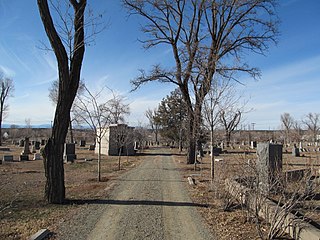
Fairview Cemetery is a graveyard in Santa Fe, New Mexico. It was for many years the only non-Catholic cemetery in the city. There are roughly 3,700 people buried there. The graveyard is listed on the National Register of Historic Places.

Black Diamond Cemetery is a cemetery located in Black Diamond, Washington listed on the National Register of Historic Places.
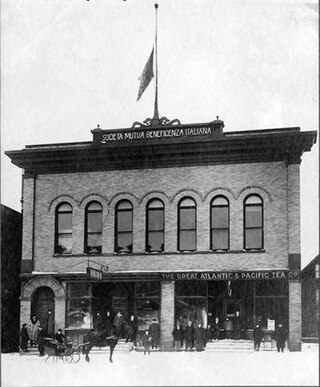
Italian Hall was a two-story commercial and recreational building in Calumet, Michigan, built in 1908 and demolished in 1984. Two prior buildings known popularly as "Italian Hall" had stood on the site. The first floor housed commercial space with a large hall on the second floor. The building served as headquarters for the Società Mutua Beneficenza Italiana and hosted community events. The hall is notorious as the site of a disaster in 1913 in which over 70 people died after a false cry of "fire" at a Christmas party. Since demolition, the site has served as a memorial park. The property is a Michigan State Historic Site and the building was formerly on the National Register of Historic Places.

The Saint Sava Serbian Orthodox Church is a Serbian Orthodox church in Jackson, California. Built in 1894, the church was the first Serbian Orthodox church in America. Amador County had a large Serbian-American population in the late 1800s due to the California Gold Rush, and the county's Serbs established the St. Sava Church Organization of Amador County in 1886–87; the organization was responsible for purchasing land for and building the church, and the effort was led by Sevastijan Dabović. The church's original design had an Eastern Orthodox influence, complete with an onion dome; while the dome was later replaced by a bell tower, the church's stained glass windows and use of icons still give it a distinctive Eastern Orthodox character. The church has been used for Serbian-American religious and social activities since its opening and is now part of the Serbian Orthodox Eparchy of Western America.
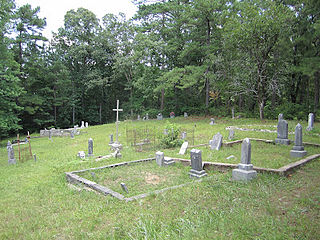
The Blocton Italian Catholic Cemetery is a historic cemetery in West Blocton, Alabama, United States. It was established in 1896 by an Italian Catholic population, immigrants who worked in the coal mines that were once numerous in the county. The cemetery is located in what was originally Blocton, a coal mining company town owned by the Tennessee Coal, Iron and Railroad Company. It was consecrated in 1901 by Edward Patrick Allen, the Roman Catholic Bishop of Mobile. It continued in use until the 1960s, with the most active use occurring during the 1910s and 1920s. The cemetery contains approximately 86 funerary monuments. It was added to the National Register of Historic Places on April 22, 1999.
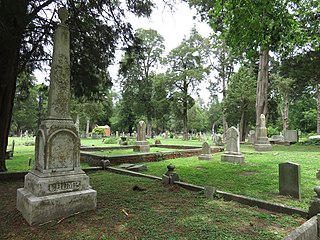
Cedar Hill Cemetery, also known as Green Hill Cemetery, is a historic cemetery and national historic district located at Suffolk, Virginia. The district encompasses four contributing structures, one contributing site, and three contributing objects in the a city-owned, 25-acre, public cemetery dating to 1802. Grave markers within the cemetery date from the early 19th century to the present day. This cemetery is a representative example of public cemetery planning and funerary artwork found in southeast Virginia and Suffolk. The contributing structures include the Darden (1938), Hosier, Hill (1933) and Brewer-Godwin mausoleums and the contributing objects include the Confederate Monument (1889) and World War I Monument.
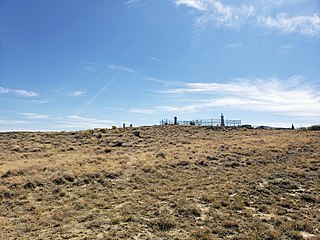
Carbon Cemetery is a cemetery in the coal-mining ghost town of Carbon, Wyoming. It was one of the first formal burial grounds in Wyoming, and is one of the few remaining vestiges of the town. Starting about 1868 the dead were brought to the town to be buried. By the late 1880s coal mining dropped off and the railroad moved elsewhere, and the town began to die. Victims of mine explosions were buried in the cemetery in 1903 and 1908. Its last resident died in 1912. A few burials took place after the town was abandoned.

The Gebo Cemetery, in Carbon County, Montana near Fromberg, Montana, was established in 1899 to serve the coal mining town of Gebo, Montana, which had population of 500 to 1,000 in the early 1900s, but was virtually abandoned after the Gebo Mine ceased operation in 1912. It was listed on the National Register of Historic Places in 1993.




















